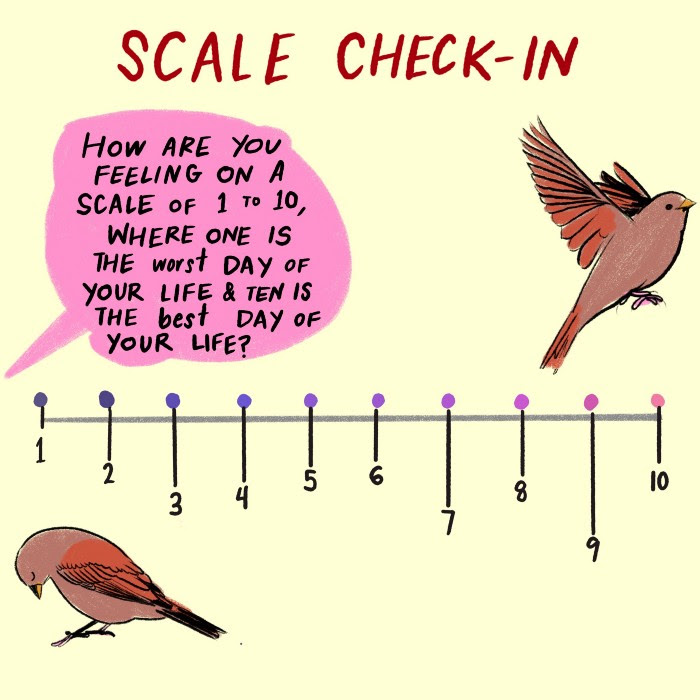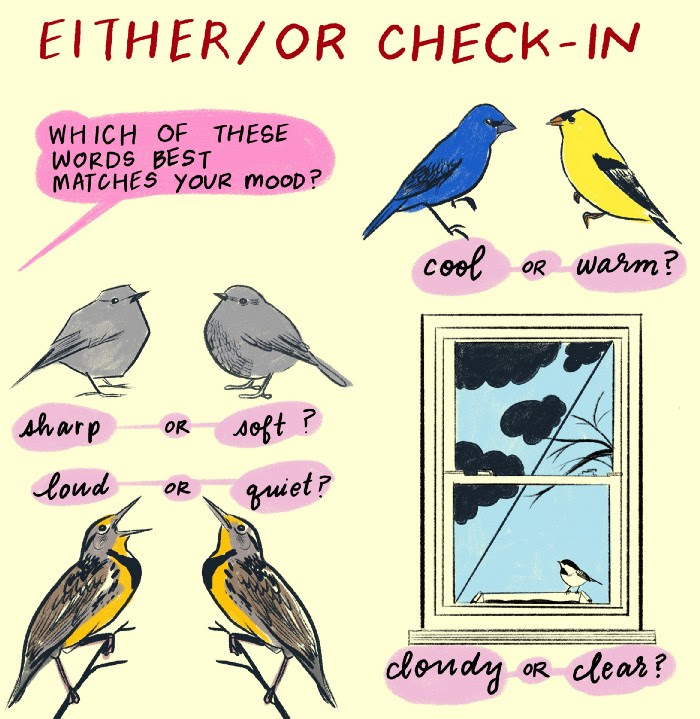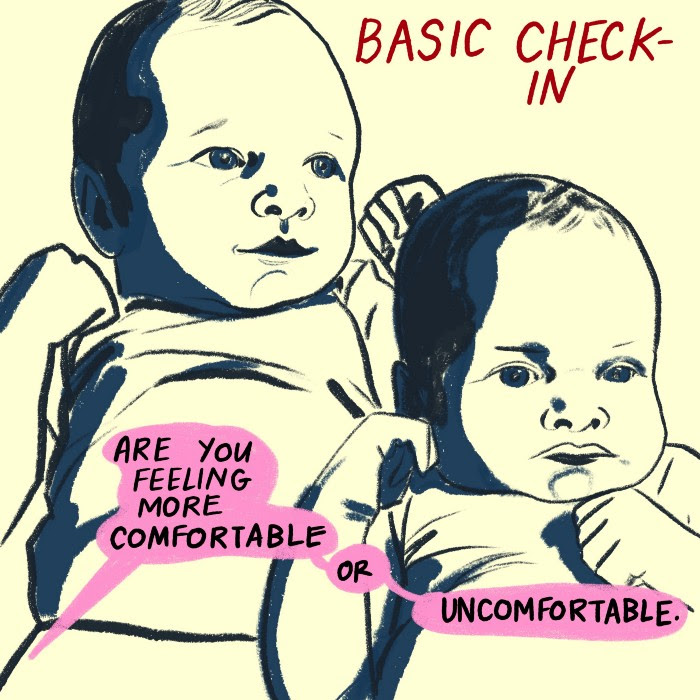Emotional Check-Ins for Yourself and Others
That aren’t just, “Hey, how’re you feeling?”

I was on the elevator at the art school where I work the other day with one other guy, when a new person stepped in. The guy knew the new person, and said, “Hey! How’re you doing?”
The other person stammered.
“I’m… like… you know. I’m doing.”
“Yeah,” the guy said. “I get it. Me too.”
I wanted to be like, “Hey guys! Me too! And everyone I know, too! And the whole world, too! How are we doing!? THERE AREN’T WORDS!” But I didn’t, because then I would be that person on the elevator. The one who makes you get off three floors before you need to just to get away from them faster.
But the stammering response is familiar, especially right now. Times are heavy. It’s hard to really put a word on how you’re feeling. (I’ve written about this before, and provided a bunch of emotional vocabulary words for those of you who are interested in that.)
And still, it’s important for us to talk about how we’re doing. We don’t have to soliloquize to everyone we run into in an elevator about our inner churnings, but in moments of despair, connection is crucial. We are social, emotional animals. Sharing about feelings is physically healing for us. (There’s science to back that up, by the way.)
It’s not always easy to pinpoint how you’re feeling, and it can take way too much time to try to describe it to someone. What’s a person with limited time and language to do?
Enter: the emotional check-in.
I use these in my classroom every time I teach at the start of class. Classrooms are communities, and in order for people to feel good in them, they have to be at least a little connected to each other. Teacher Sophie likes to say, “By sharing how you feel, we can treat you the way you need to be treated on any given day. If you’re have a bad day, we can all work a little harder to be a little gentler with you.”
Here are a few templates.

This is my go-to check-in, because it is, in some ways, the simplest. In order to do it yourself, take a pause and consider the facts of this day. How is the day going? That’s a good starting place, and it can break into longer, more interesting conversations.

It’s fascinating to figure out where feelings hang out in our bodies! A few years ago I found out that my most cumbersome feelings like to get tangled up in my throat. I had always thought they were in my chest, but when I really paid attention, I found that they were actually in the back of my mouth. Noticing whether your feelings are welcome or intrusive is not a judgement, it’s just an observation. If you notice that your feelings are intrusive, you might also notice that you’re pushing them away. That’s a habit that actually makes uncomfortable feelings pretty sticky. The best way to move through them is to welcome them. (This is one of the central tenets of Buddhist practice; it’s ancient wisdom that has served generations of feeling people.)

This is a good expansion on the body check-in. Close your eyes and pinpoint where the emotion lives inside your body. Some days you might think you’re not feeling much of anything. These are days where the reply, “Oh, I’m fine” feels fairly accurate, and you would be hard-pressed to name a feeling word. This check-in invites you to consider that maybe you’re not feeling nothing, but rather, your feelings are light and tiny on this day.

This is a fun check-in, because you can Mad Lib your own categories and make it fit your specific interests. A few cues I like are the ones above, because they help me think about my emotions in ways I wouldn’t have thought to think about them. Today, for example, my feelings are fairly warm, clear, soft, and quiet. (Another way people approach this kind of check-in is to describe their feelings as a weather pattern.)

I used to teach Emotional Literacy at an elementary school and puzzled for a long time over how to scaffold emotional vocabulary. It is deceptively difficult to label your emotions, and for a lot of people, the question is a turn-off — because it’s way too hard! Determining whether you’re feeling generally comfortable or uncomfortable is a little simpler, and gives the person you’re talking to a lot of information.
It might seem weird to ask people how they’re feeling like this on an elevator, but then again, it might be refreshing. Give it a try. You may end up lightening someone’s heavy lift.






